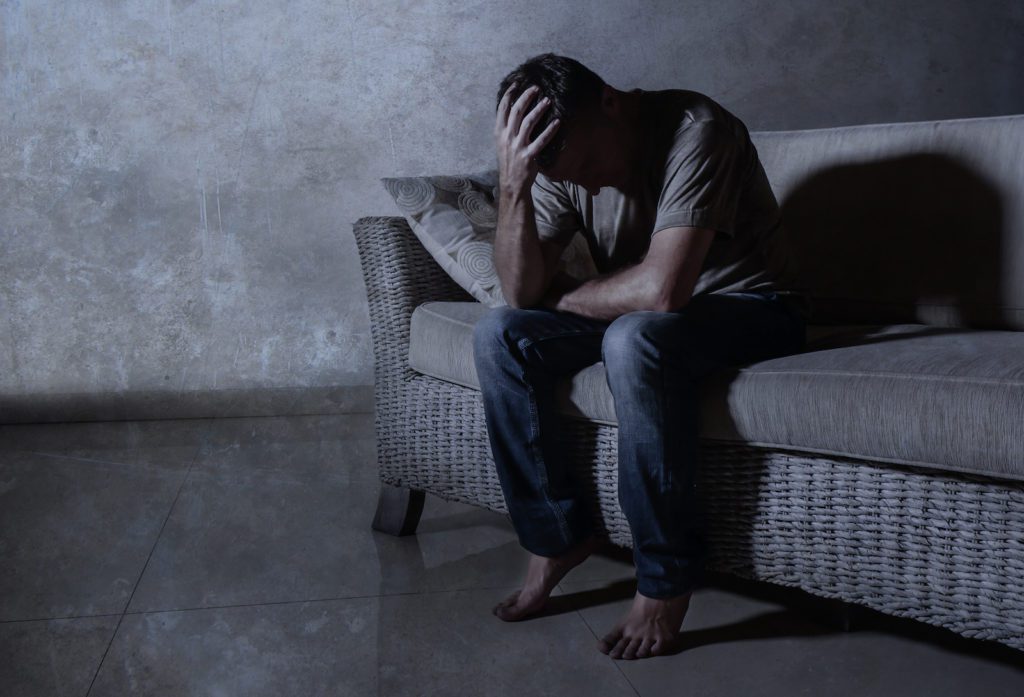
Table of Contents
Opioid medications are extremely powerful and effective at reducing the feelings of pain that an individual feels. Unfortunately, anyone who is using opioid medication, regardless of whether a doctor prescribes it, is at risk of developing dependence or addiction to opioids.
Millions of people suffer from opioid use disorder or misuse of opioids around the world every year. Opioids are a very popular type of drug and include drugs such as morphine, oxycodone, heroin, and Vicodin. All of these drugs relieve pain and cause the brain to release a huge amount of dopamine.
This makes the user feel fantastic and high, but these drugs are highly addictive. The more an individual uses opioids, the more their body and brain adapt to the drug usage. As this happens, the user’s tolerance increases, resulting in the user needing to take more of the drug to achieve the same euphoric feeling.
As it happens, addiction frequently sets in. Drug addiction is a chronic condition that can affect anyone, regardless of race, gender, age, socioeconomic status, ethnicity, or any other defining demographic. Drug addiction does not go away on its own. It requires treatment, a commitment to healing, and often a combination of treatment plans spanning multiple disciplines, including psychotherapy, medication, and rehabilitation.
One of the methods used to help people addicted to opioids is the opioid replacement medication treatment plan. This is sometimes referred to as MAT or medically assisted treatment. More often than not, medically assisted treatment is a great way to help people suffering from drug addiction begin recovery and avoid extreme withdrawal symptoms.
Medically assisted treatment also helps to decrease drug cravings and lower the risk that the individual will relapse. However, there is a risk that the drugs used in medically assisted treatment can be misused, resulting in precipitated withdrawal.
Please read more to find out information about precipitated withdrawal, the side effects, some coping mechanisms, and how to get the help you need when you are suffering through precipitated withdrawal.
What is Precipitated Withdrawal?
Precipitated withdrawal occurs when a person uses a medication prescribed to assist in medically assisted treatment too soon in the withdrawal process, which causes them to experience sudden and extremely severe opioid withdrawal symptoms.
We must first explain the medications used in medically assisted treatment to understand what precipitated withdrawal is. Three prescription medications can be given to somebody in recovery from opiate addiction: Subutex, Suboxone, and Naltrexone. These prescription medications help them to transition from their addiction into sobriety.
Subutex and Suboxone are made with buprenorphine, a drug that activates the opioid receptors in the brain. Buprenorphine is designed and intended to lower the intensity of opioid withdrawal symptoms, which can help people in recovery reach sobriety and stay sober. On the other hand, Naltrexone does not activate opioid receptors. This chemical blocks the receptors instead.
Precipitated withdrawal can occur when a person takes one of these medications before their bodies have completed detoxing the opioid drugs. Withdrawal symptoms from opioid drugs are particularly difficult due to their intensity and notoriety for being incredibly painful. Precipitated withdrawal makes these symptoms that are already horrible much worse.
Precipitated withdrawal symptoms add to various symptoms and can include severe side effects, including excessive sweating, vomiting, and diarrhea. Due to the severity of precipitated withdrawal symptoms, they can cause severe health problems, and some people end up in the hospital.
Because of the frequency of vomiting and diarrhea associated with precipitated withdrawal, the individual going through it is at a higher risk of dehydration and electrolyte imbalance.
What Are the Side Effects of Precipitated Withdrawal?
Precipitated withdrawal can cause various painful and uncomfortable side effects and symptoms. Many people describe precipitated withdrawal as the polar opposite of an opioid high. This means instead of feeling euphoric and reduced pain, an individual will feel sudden pain and often anxiety or stress.
Beyond the feelings of discomfort, stress, pain, and anxiety, other symptoms are specifically associated with precipitated withdrawal. These include the following listed symptoms.
- Nausea
- Vomiting
- Diarrhea
- Runny nose
- Chills
- Headaches or migraines
- Goosebumps
It is easy to explain why these symptoms are added to the normal symptoms of opioid withdrawal symptoms. A medically assisted treatment withdrawal plan is like gently pressing your brakes to slow down and stop at a stoplight. Precipitated withdrawal and normal withdrawal are like slamming on the brakes 5 feet before the stop light. In both cases, the car stops, but one is far more gentle and takes longer, while the other is more intense and short.
Understanding why precipitated withdrawal happens is important. People who use opioids have opioid receptors throughout their bodies with a heightened concentration in their brain and spinal cord.
An opioid agonist includes drugs like heroin, fentanyl, and morphine, and these can unlock those receptors like a key. The key fits perfectly and, upon unlocking the receptor, triggers a barrage of electrical signals throughout the body that tell the body to produce the feelings of euphoria, painlessness, and relief associated with taking opioid drugs.
On the other hand, opioid antagonists include drugs like the ones used in medically assisted treatment. These drugs work oppositely. They fit the receptor perfectly, but unlike the opioid agonist that unlocks the receptor, they fill it without triggering the body to do anything.
Because the receptors are now full of something, the opioid agonists cannot unlock the receptors and cause the feeling of being high on opioids. However, if the opioid antagonist is taken too soon, the loss of signals from the opioid receptors kicks precipitated withdrawal into action.
This happens because a person physically dependent on opioids and has not completed detoxification needs to have their opioid receptors unlocked to prevent withdrawal symptoms from kicking in.
Precipitated withdrawal has a different lifespan depending on various factors, including how long the user has been taking opioid drugs, how many drugs were being taken, the person’s metabolism, and general health. Precipitated withdrawal can last between a couple of hours to several days.
Precipitated Withdrawal Coping Techniques
Dealing with precipitated withdrawal is a tricky situation. This is because one of the ways to stop precipitated withdrawal is to take an opioid. This is effective in stopping precipitated withdrawal because the opioid receptors are unlocked, which is what is needed to stop or prevent withdrawal from occurring.
However, there is a very clear issue with taking an opioid to stop precipitated withdrawal. If a person is trying to quit using opioid drugs, taking them puts the person back at square one again.
Suppose a person takes an opioid drug to stop the onset or continuation of precipitated withdrawal. In that case, they must wait for the opioids to leave their system before starting the medically-assisted treatment with an opioid antagonist or partial agonist. Starting too soon will bring about precipitated withdrawal again.
However, there are ways to handle precipitated withdrawal without taking opioids again.
Firstly, if the person going through precipitated withdrawal is in a medical center or a drug detox center, or if they have a doctor or access to another medical prescriber, they can ask for a dosage of buprenorphine.
Even though buprenorphine can cause precipitated withdrawal, it can also be used to treat the symptoms of precipitated withdrawal.
This is because switching from an opioid that is a complete agonist (think heroin) to buprenorphine which is a partial agonist is sometimes enough to cause precipitated withdrawal. However, for a person who is already experiencing the effects of precipitated withdrawal, a dosage of buprenorphine can help to relieve the symptoms because it partially unlocks the opioid receptors, which prevents withdrawal.
A partial agonist like buprenorphine is a safe option to cope with precipitated withdrawal symptoms because it soothes the symptoms without risking overdose from taking opioid drugs again. Plus, a partial agonist will not give the same effects as a full agonist, so it is a different type of sensation.
Buprenorphine is the best option to treat precipitated withdrawal symptoms.
If buprenorphine is not your path, going to the emergency room is another option. The hospital staff can give you medications and fluids and keep tabs on your condition until you feel well again.
Lastly, is dealing with precipitated withdrawal on your own. This is highly dangerous because it gives the user a higher chance of taking opioids again to ease the symptoms. This can often lead to an overdose.
If you choose to deal with precipitated withdrawal at home by yourself, some things can help. Ask your doctor if they have any tips or medications that could ease your symptoms.
You can take over-the-counter medications to deal with the symptoms, like ibuprofen for body aches, loperamide for diarrhea, and buy sports drinks with electrolytes. Make sure to stay hydrated by drinking or sipping water if you are vomiting. Eat foods with lots of water like melons, peaches, cucumbers, or celery. Keep your electrolyte levels up by drinking sports drinks and eating veggies.
For extreme nausea, try gently sniffing a bit of isopropyl alcohol. Do not put it in your nose, eyes, or mouth.
Try to relax and let your body do what it needs. Find a comfortable place and settle in. Distract yourself with games, a favorite TV show, talking to friends and family, or gently stretching your body to improve blood flow.
How to Get the Help You Need When Going Through Precipitated Withdrawal
The best help that you can get for precipitated withdrawal comes at recovery centers. There is no doubt that professional staff can help you. Reach out to a premier rehab facility today to start on your path to wellness and recovery right away.
Sources:
Ocean Recovery has strict sourcing guidelines and relies on peer-reviewed studies, academic research institutions, and medical associations for our references. We avoid using tertiary references as our sources. You can learn more about how we source our references by reading our editorial policy.
- Quattlebaum THN, Kiyokawa M, Murata KA. A case of buprenorphine-precipitated withdrawal managed with high-dose buprenorphine. Fam Pract. 2022;39(2):292-294. doi:10.1093/fampra/cmab073






